Discover 11 hidden attractions, cool sights, and unusual things to do in Nagano (Japan). Don't miss out on these must-see attractions: Zenkō-ji, Prefectural Shinano Art Museum, and Kitano Museum of Art. Also, be sure to include Matsushiro Castle in your itinerary.
Below, you can find the list of the most amazing places you should visit in Nagano (Nagano).
Table of Contents
Zenkō-ji
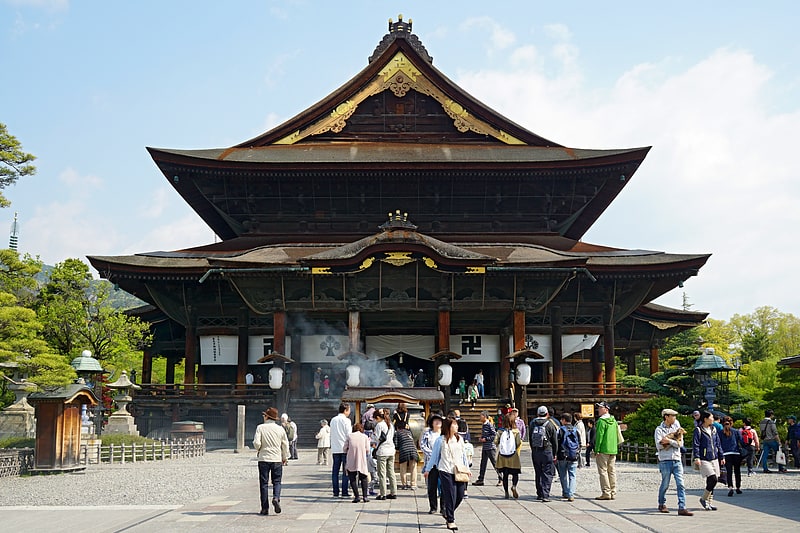
Also known as: 善光寺
Buddhist temple with a treasure house. Zenkō-ji is a Buddhist temple located in the city of Nagano, Japan. The temple was built in the 7th century. The modern city of Nagano began as a town built around the temple.
Historically, Zenkō-ji is perhaps most famous for its involvement in the battles between Uesugi Kenshin and Takeda Shingen in the 16th century, when it served as one of Kenshin's bases of operations. Currently, Zenkō-ji is one of the few remaining pilgrimage sites in Japan.
Zenkō-ji was founded before Buddhism in Japan split into several different sects. It currently belongs to both the Tendai and Jōdoshū schools of Buddhism, and is co-managed by twenty-five priests from the former school, and fourteen from the latter. The temple enshrines images of the Amida Buddha. According to legend, the image, having caused dispute between two clans, was dumped into a canal. It was later rescued by Honda Yoshimitsu. The temple was thus named "Zenkō," according to the Chinese transliteration of Yoshimitsu's name.
The main Buddhist image is a hibutsu (secret Buddha), a hidden Buddha statue, not shown to the public. This hibutsu is rumored to be the first Buddha statue to ever be brought to Japan. The commandments of the temple require the absolute secrecy of the statue, prohibiting it to be shown to anyone, including the chief priest of the temple. However, a replica of the statue (Maedachi Honzon) has been created which can be shown publicly once every six years in spring, in a ceremony called Gokaichō. This event attracts many worshipers and visitors. When the statue was on display in 2003, Zenkō-ji cooperated with Motozenkō-ji and Zenkō-ji of Kofu, Yamanashi Prefecture. The most recent display of "Maedachi Honzon" took place in April and May, 2015.
The temple contains a statue of Binzuru, a physician who was said to be Buddha's follower. Visitors to the temple touch the statue in order to cure their ailments. The temple also contains an inner prayer chamber, accessible to visitors. Currently, a daily morning ritual is held there by the high priest or priestess. From the inner chamber, a narrow staircase leads down to a completely dark corridor. In this corridor worshippers try to touch a metal key hanging on the wall, in order to gain enlightenment. The key represents the Key to the Western Paradise of the Amida Buddha.[1]
Address: 491 Naganomotoyoshicho, Nagano, 380-0851 Nagano
Prefectural Shinano Art Museum
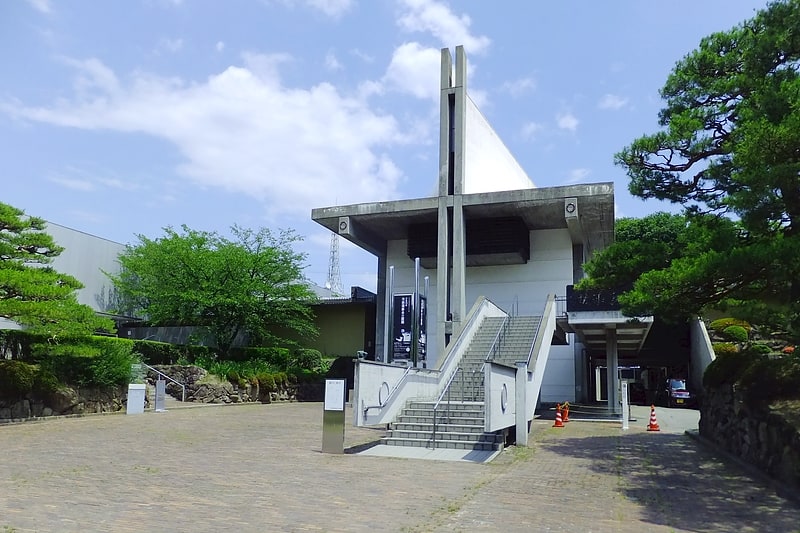
Nagano Prefectural Shinano Art Museum opened as Shinano Art Museum in Jōyama Park, Nagano, Nagano Prefecture, Japan in 1966, becoming a prefectural museum three years later. It is dedicated to the artists of, and works relating to, Shinshū, including paintings by Hishida Shunsō, Nakamura Fusetsu, and Fujishima Takeji. On 26 April 1990, the Higashiyama Kaii Gallery opened as an annex; currently, there are more than 970 works by the artist. After fifty years, in 2017, the complex closed for renewal, the Higashiyama Kaii Gallery reopening in 2019, the Art Museum scheduled to reopen in April 2021.[2]
Address: 1-4-4 Hakoshimizu, 380-0801 Nagano
Kitano Museum of Art

The Kitano Museum of Art, which opened in 1968 as the first private art museum in Nagano Prefecture, is today run by a public interest incorporated foundation, in the Wakaho district, in the southeastern section of Nagano in Nagano Prefecture. The museum is located next to the Yushimatenmangu Shrine, a branch of Yushima Tenman-gū which was founded in 458 in Bunkyō in Tokyo. The entrance to the museum is through the Yushimatenmangu Shrine. The museum includes a Japanese garden by Mirei Shigemori, a notable 20th century modern landscape architect, that was completed in 1965.
In addition to the museum in Wakaho, there is an annex, the Kitano Cultural Center, which is located in downtown Nagano on Chuo Dori near the Gocho Campus of the University of Nagano and Zenkō-ji Temple; and the Togakushi Branch Museum of Kitano Museum of Art, which is located in the mountainous Togakushi district of Nagano City near the entrance to Togakushi Shrine. The Togakushi building received a Nagano City Landscape Award.[3]
Matsushiro Castle
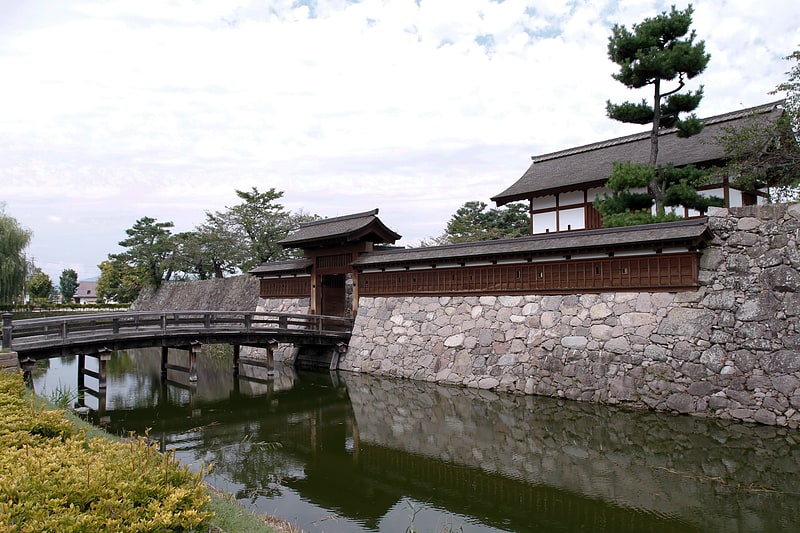
Also known as: 松代城
Castle in Nagano, Japan. Matsushiro Castle, formerly known as Kaizu Castle, is a Japanese castle located in former Matsushiro town, now part of The site is a registered National Historic Site of Japan.[4]
Address: Matsushiro, Matsushiro-machi, 381-1231 Nagano
Chōkoku-ji
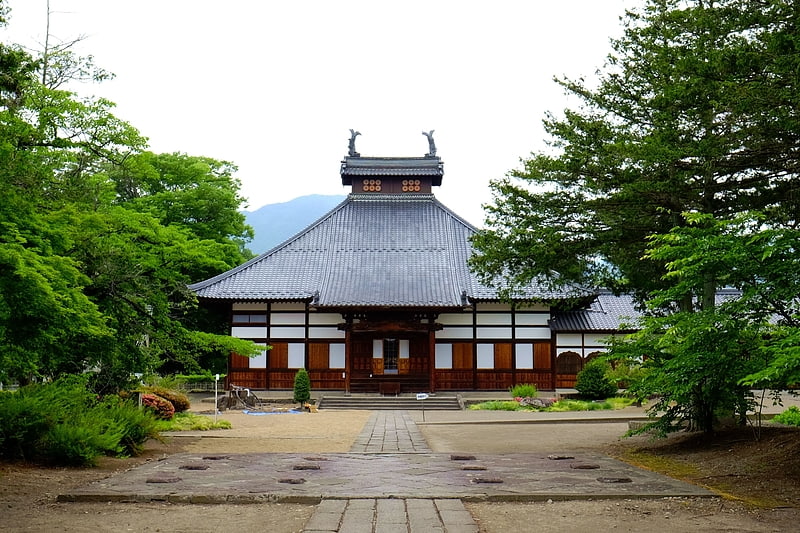
Chōkoku-ji is a Buddhist temple belonging to the Sōtō sect of Japanese Zen located in the former town of Matsushiro (presently part of the city of Nagano in Nagano Prefecture, Japan. It is the mortuary temple of the Sanada clan, local warlords in the Sengoku period and daimyō of Matsushiro Domain under the Edo period Tokugawa shogunate.[5]
Togakushi Shrine
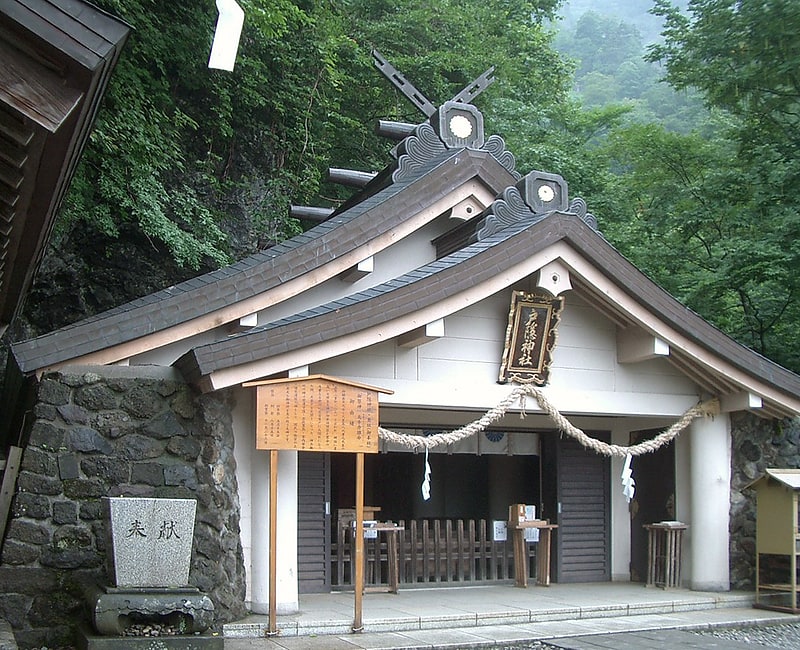
Also known as: 戸隠神社
Ancient Shinto shrine in a scenic forest. The Togakushi Shrine is a Shinto shrine in Togakushi, Nagano, Nagano Prefecture, Japan. The shrine is at the base of Mount Togakushi in Myōkō-Togakushi Renzan National Park. Togakushi Shrine consists of five shrines, known as the lower, middle, and upper shrine area, each area about 2 km apart.
The approach to the upper shrine is lined with over 300 Cryptomeria trees, some believed up to 900 years old.
Kuzuryu means nine-headed dragon. The dragon is calling for rain, and Togakushi village has abundant spring water from mountains.
- The Hōkō-sha (lower shrine) is to a patron goddess, protecting maternity, academic life, and sewing
- The Hino-miko-sha is God of fire and the performing arts
- The Chū-sha (middle shrine) is God of wisdom
- The Oku-sha (upper shrine) is God's marvelous threw rocks
- The Kuzuryu-sha is God of rain and landowner God of Togakushi villages
Around five shrine and pilgrimage certification seal gosyuin to make things possible.[6]
Address: 3506 Toagakushi, 381-4101 Nagano
M-Wave
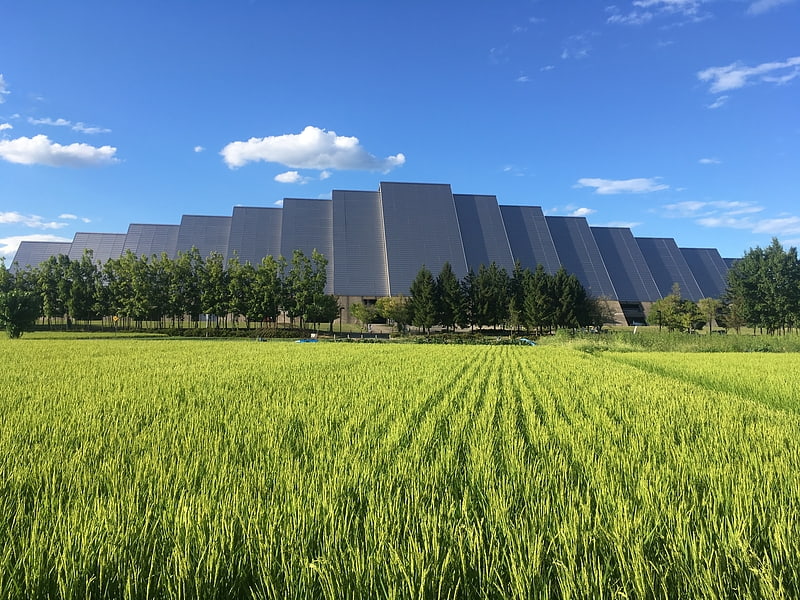
Also known as: 長野市オリンピック記念アリーナ
Sports venue in Nagano, Japan. Nagano Olympic Memorial Arena, or M-Wave, is a covered speed skating oval in the city of Nagano, Japan. M-Wave, which opened in November, 1996, was constructed for the speed skating events at the 1998 Winter Olympics. It was Japan's first International Skating Union standard indoor 400m double-track, and only second indoor track speed skating in Japan. The other, Meiji Hokkaido-Tokachi Oval, is located in Obihiro, Hokkaido.
In addition to the 1998 Winter Olympics, the 2002 World Figure Skating Championships, various ISU world speed skating championships and speed skating world cups, and the 2005 Special Winter Olympics were held. Outside the winter business, other sporting events, large-scale exhibitions and concerts are held.
M-Wave is located in the eastern sections of Nagano City, in the communities of Asahi (朝陽) and Mamejima (大豆島), near the Chikuma River and the city of Suzaka (須坂). M-Wave is located within short distance of four other venues of the 1998 Winter Olympics. It is 3 kilometers from the Aqua Wing Arena, which hosted ice hockey; 5 kilometers from Big Hat, which also hosted ice hockey; 6 kilometers from White Ring (arena), which hosted the figure skating; and short track speed skating events; and 11 kilometers from Nagano Olympic Stadium, which was used for the opening and closing ceremonies.
The skating rink operates from October to March, with the 400-m speed skating oval and a regulation-size ice hockey rink inside the oval.
M-Wave was constructed at a cost of 348 billion yen as a speed skating venue for the 1998 Winter Olympics. The building's name, M-Wave comes from its distinct shape which is designed to resemble the surrounding mountains. The building, which was the recipient of the Special Award by the British Institution of Structural Engineers, is one of the largest hanging wooden roof structures in the world. The arena has a capacity of 18,000. The M-Wave is equipped with movable stands and an automatically winding artificial lawn machine. The two movable stands, each of which have seating for 1,210 spectators, allow the arena to be converted into various configurations including concert hall or a football field.[7]
Address: 195 Nagaike, Nagano
Nagano Sports Park
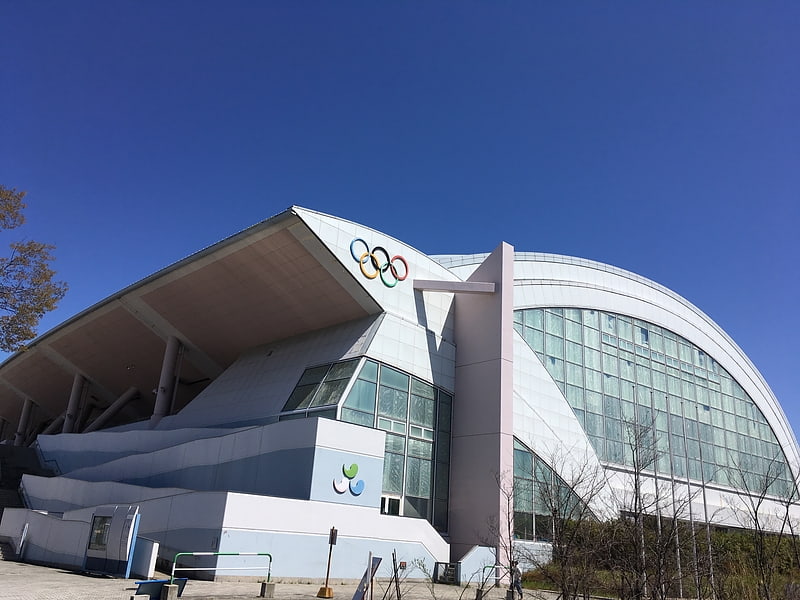
Park in Nagano, Japan. Nagano Sports Park is a park located in the Yoshida area of the city of Nagano, Nagano, Japan, approximately 5 km northeast of Nagano Station. The facilities are owned by Nagano Prefecture and by the Nagano municipal government.
The park hosted events during the 1998 Winter Olympics and the 1998 Winter Paralympics. The Nagano Olympic Commemorative Marathon begins at Nagano Sports Park. The Aqua Wing Arena located within the Sports Park will be an international pre-training camp for the 2020 Summer Olympics.
Nagano Sports Park should not be confused with the Minami Nagano Sports Park, located approximately 8 km south of Nagano Station in the Shinonoi area of the city, where the opening and closing ceremonies of the 1998 Winter Olympics were held.[8]
Matsushiro Underground Imperial Headquarters
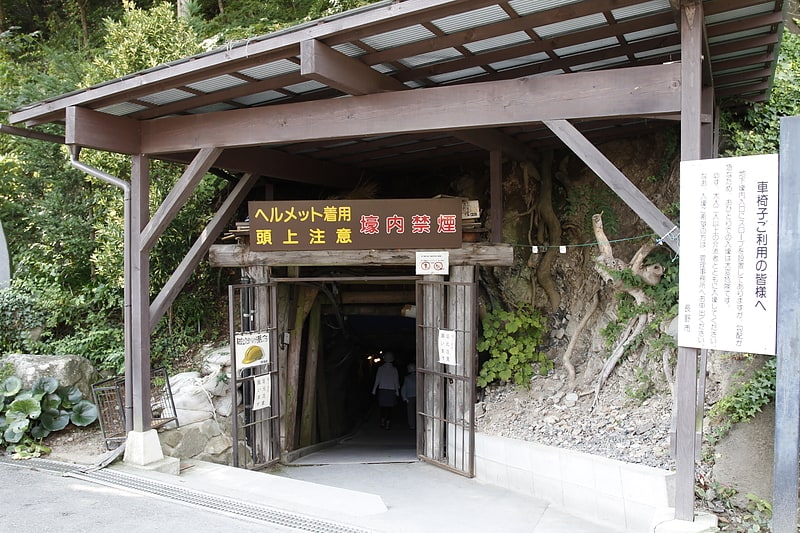
Also known as: 松代大本営跡
Historical landmark in Nagano, Japan. The Matsushiro Underground Imperial Headquarters was a large underground bunker complex built during the Second World War in the town of Matsushiro, which is now a suburb of Nagano, Japan. The facility was constructed so that the central organs of the government of the Empire of Japan could be transferred there. In its construction, three mountains that were symbolic of the Matsushiro municipality were damaged.
Parts of the caves are open to the public today, and are operated as a tourist attraction by Nagano.[9]
Tsugaike Kogen Ski Resort
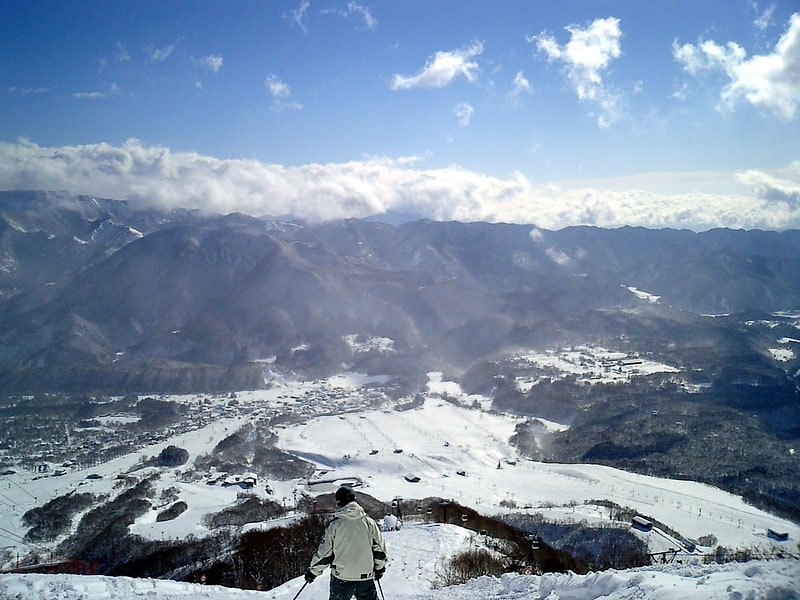
Tsugaike Kogen Ski Resort is a ski resort located in Tsugaike Kogen, Kotani-mura, Kitaazumi-gun, Nagano Prefecture, Japan.
Susobana Dam
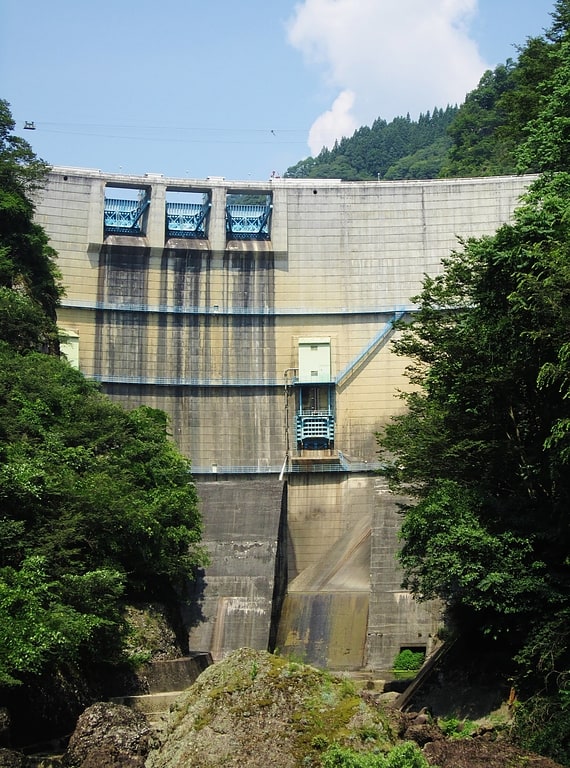
Also known as: 裾花ダム
Power station in Nagano, Japan. Susobana Dam is a dam in the Nagano Prefecture, Japan, completed in 1969.[10]